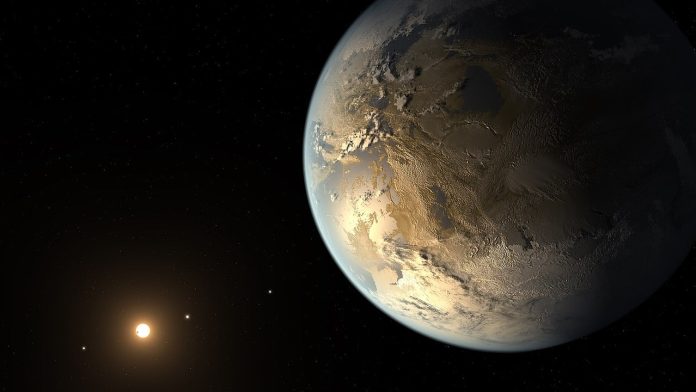
Astronomers have found a fascinating new world that challenges our understanding of planetary systems.
Using NASA’s Transiting Exoplanet Survey Satellite (TESS), an international team of researchers has discovered TOI-2431 b, an Earth sized planet orbiting a nearby star just 117 light years away.
What makes this discovery extraordinary isn’t just the planet’s size, it’s how incredibly fast it races around its star.
TOI-2431 b completes a full orbit around its host star in just 5.4 hours, making it one of the shortest “years” ever recorded for any known planet.
To put this in perspective, while Earth takes 365 days to orbit the Sun, this distant world experiences more than 1,600 “years” in the same timeframe.
The planet sits extremely close to its star too, only about 0.0063 AU away, which is roughly 933,000 kilometres.
This proximity comes with extreme consequences.
The planet’s surface temperature reaches approximately 2,000 Kelvin (about 1,727°C), hot enough to melt most rocks and metals. Scientists believe the planet’s surface is likely molten, creating a landscape of liquid rock and metal.
Despite being classified as Earth sized, TOI-2431 b is quite different from our home planet.
With a radius about 1.53 times larger than Earth and a mass 6.2 times greater, this world is significantly denser than Earth.
Its density of 9.4 grams per cubic centimetre suggests it’s made of much heavier materials, possibly containing a large iron core or other dense metals.
The intense gravitational forces from its nearby star have likely changed the planet’s shape.
The team estimate that TOI-2431 b is tidally deformed, with its shortest axis being about 9 percent shorter than its longest axis, giving it a somewhat flattened appearance rather than a perfect sphere, like the Earth but somewhat more extreme.
Perhaps most intriguingly, this planet won’t be around forever. The researchers calculated that TOI-2431 b has a tidal decay timescale of about 31 million years, the shortest known among similar ultra short period planets.
This means the planet is gradually spiralling into its star and will eventually be consumed, though the planet’s eventual demise won’t happen for many millions of years.
The discovery team, led by Kaya Han Taş of the University of Amsterdam, confirmed the planet using multiple observation methods, including TESS data, ground based telescopes, and specialised spectrographs.
Scientists noted that TOI-2431 b would be an excellent target for the James Webb Space Telescope to study further, potentially revealing details about its surface composition and whether it retains any atmosphere despite the extreme conditions.
This discovery adds to our growing catalog of extreme worlds and helps scientists understand how planetary systems form and evolve under different conditions, expanding our knowledge of the incredible diversity of planets in our Galaxy.
Written by Mark Thompson/Universe Today.



